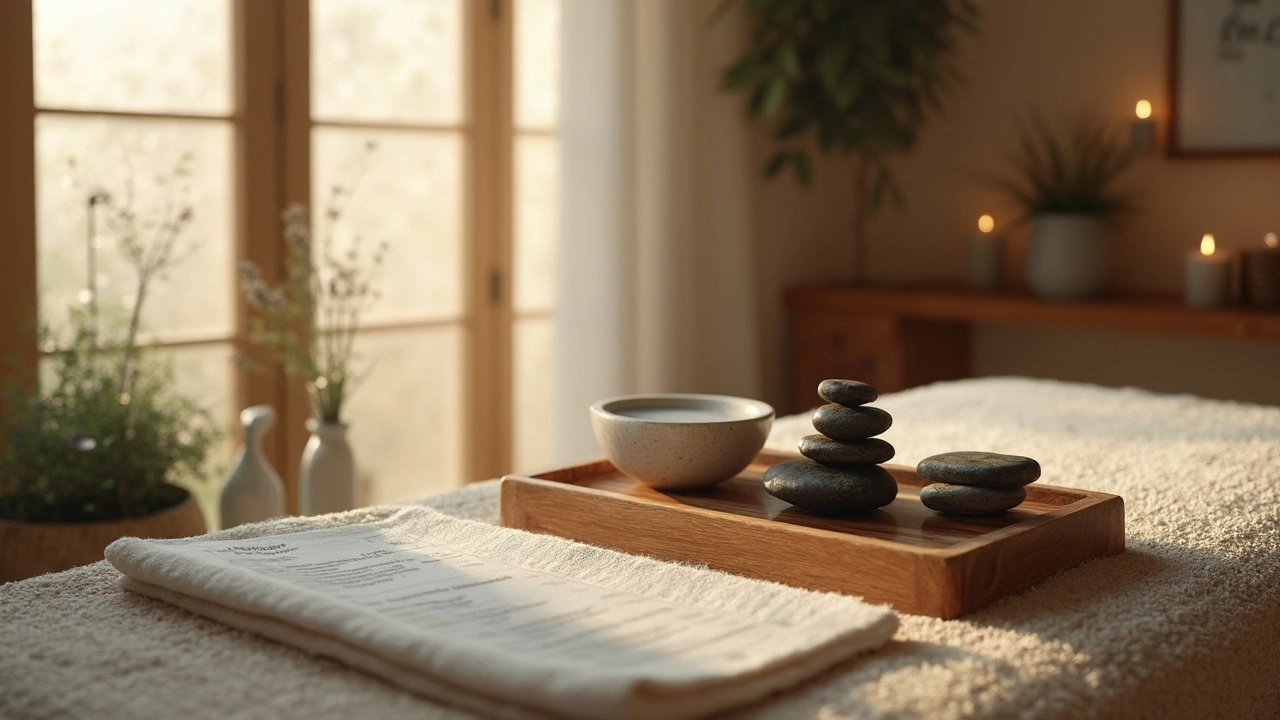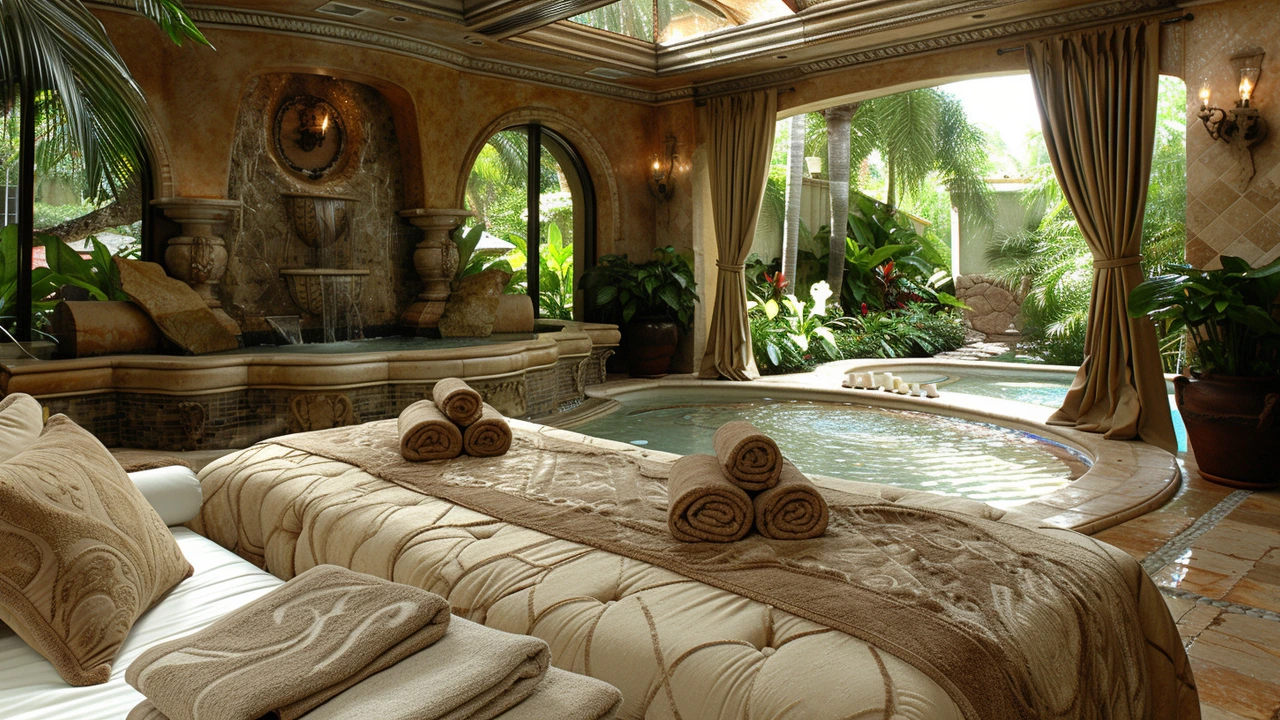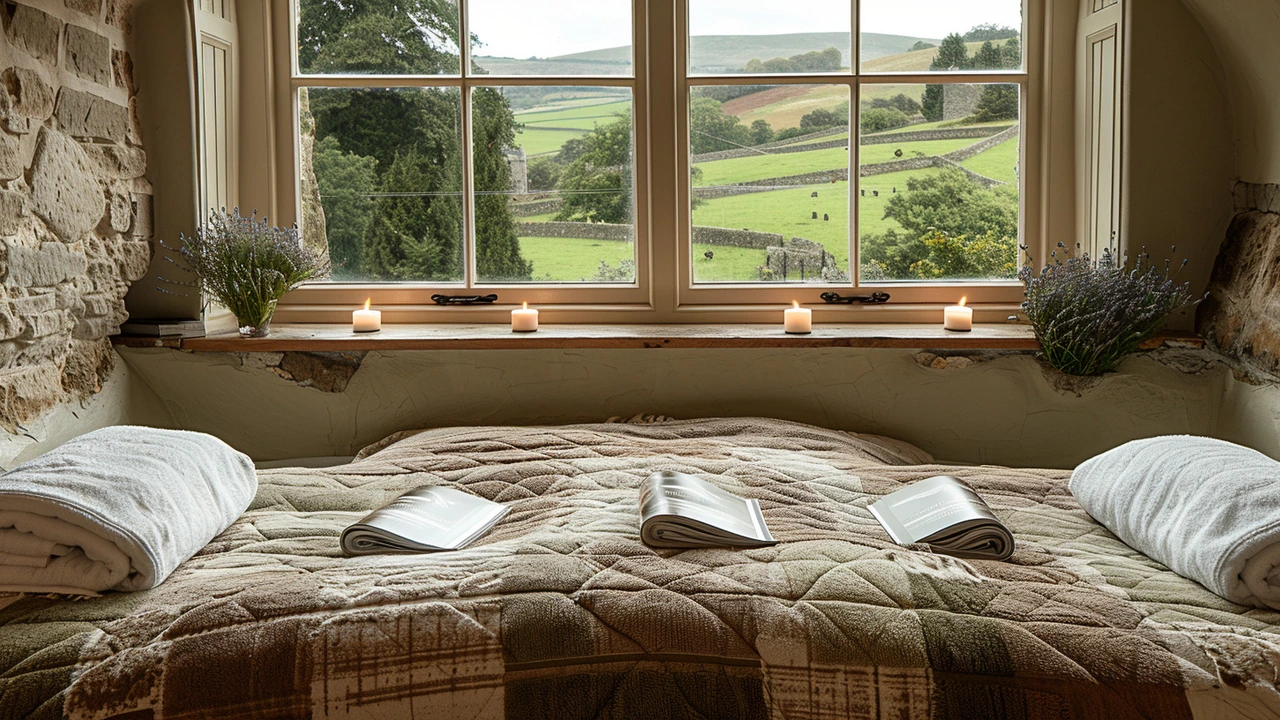Stone Massage in Modern Therapy: What Really Works

If you’ve ever left a massage room feeling like you just came back to life, there’s a good chance hot or cold stones played a part. Stone massage isn’t just about the feel-good factor. Therapists use heated and chilled stones for a reason—they go deep where hands sometimes can’t, melting tension and speeding up the body’s natural healing.
Here’s something people don’t always realize: temperature matters. Warm stones boost blood flow, which helps muscles release built-up tightness and makes it easier for you to move without pain. When therapists flip to cold stones, it has almost the opposite effect—think less swelling and inflammation after a workout or injury. Smart use of both can turn a basic massage into something way more effective.
Curious if stone massage could do more than just relax you? Stick around, because knowing when to ask for which stones, and how to tell if your therapist knows their stuff, can make a real difference in the results you feel.
- Hot Stone vs. Cold Stone: What Happens in Your Body
- Real Benefits Backed by Science
- Myths and Mistakes to Avoid
- Tips for Getting the Most Out of Your Session
Hot Stone vs. Cold Stone: What Happens in Your Body
Hot stone massage isn’t about feeling cozy—it works because heat changes your body on a deeper level. Heated stones (usually basalt, which holds warmth well) are placed or rubbed on muscles. The heat widens your blood vessels, getting more oxygen and nutrients to the tissues. This means stiff muscles loosen up, soreness fades faster, and you feel more relaxed right away. Studies show that heat therapy helps reduce chronic back pain, especially when combined with massage.
On the flip side, cold stones (often marble because it stays cool longer) aren’t just for refreshing your skin. Cold shrinks blood vessels. That makes swelling go down and helps control any bruising or pain after workouts or injuries. If you’ve ever used an ice pack, you already get the basic idea. Therapists use cold stones on trouble spots—like swollen ankles or a sore neck—to help calm things down fast.
What really makes stone massage stand out is mixing the two. Alternating hot and cold stones is called contrast therapy. You get all the upsides: better circulation, less swelling, a more balanced nervous system, and a wave of calm. Athletes use this kind of temperature switch all the time for recovery because it actually jump-starts healing inside the body.
If you’re wondering which you should ask for during your next stone massage, think about what’s bothering you. Chronic tension and stress? Heat usually helps more. Fresh soreness or swelling? Go for cold. And for long-term aches or stubborn injuries, a smart mix of both might be exactly what you need.
Real Benefits Backed by Science
Let’s talk results. People ask if stone massage really delivers more than just good vibes—yep, the studies back it up. When therapists use hot stones, muscle flexibility goes up and pain drops fast. A study published in 2017 found that folks who got heated stone massage after tough workouts recovered muscle function 30% quicker than those who just rested.
Cold stones have their perks too. They help cut swelling, push out lactic acid (that stuff that makes your muscles sore), and bring down inflammation. Want proof? Physical therapists often reach for cold stones to calm fresh injuries, and their patients bounce back faster.
- Hot stones relax nervous system response, dropping stress hormone levels—one 2020 review said cortisol fell by 18% after a session.
- Some therapists use alternating hot and cold stones to boost circulation and ease headaches—a trick borrowed from athletes who swear by contrast therapy.
- Faster healing: massage with stones, especially after injury, helps people regain mobility sooner.
How often should you go? If you’re active, weekly or bi-weekly sessions can improve recovery. People with chronic pain or anxiety feel better with regular treatments, with one small trial showing anxiety dropped by almost half after three weeks of stone massage therapy.
| Benefit | Evidence |
|---|---|
| Reduced Muscle Tension | Muscle pain reported 48% lower after stone massage, per 2017 study |
| Faster Recovery | 30% quicker muscle function return vs. rest alone (2017) |
| Lower Stress | 18% drop in cortisol after one session (2020 review) |
| Less Anxiety | Almost 50% decrease after 3 weeks (pilot trial) |
If you struggle with tightness, stress, sore joints, or even headaches, a stone massage can bring real gains. Just make sure your therapist knows how to switch up temperatures and techniques, since that’s where the real science-backed magic happens.

Myths and Mistakes to Avoid
Lots of people think stone massage is just about relaxation or only for the super fancy spas. Actually, this therapy can be legit for easing pain, helping with chronic tension, and even speeding up how fast your muscles recover. Don’t let the Instagram-worthy shots fool you—there’s science here, not just luxury.
Another myth? Hotter stones mean a better massage. That’s a recipe for disaster. Stones that are too hot can burn your skin or leave you sore for days. Good therapists check the temperature on their own skin first and talk to you during the massage. If a stone feels way too warm, you should always say something. Also, stone massage isn’t a cure-all. It helps tons of people, but it shouldn’t replace seeing a doctor if you have real injuries or medical problems.
Beginner mistakes matter too. Cold stones left too long on muscles can make you stiff or even send your body into a mini shock, especially for folks not used to the cold. That’s why therapists move stones around, never letting cold or hot stones sit in one spot for ages.
- Don’t do DIY stone massage without research. The wrong stone, the wrong temp, and you’re risking burns or bruises.
- Oil is your friend. Stones pull on skin without plenty of massage oil. No oil means friction—and that means discomfort or even tiny tears in the skin.
- Tell your therapist if you have nerve issues, diabetes, or poor circulation. Sometimes, even a regular session isn’t safe if you have certain medical conditions.
Stone massage works best when myths and mistakes don’t get in the way. A solid therapist will always listen and adjust, so if it doesn’t feel right, speak up. You get better results and a safer, more relaxing experience.
Tips for Getting the Most Out of Your Session
Most people just show up and hope for the best with a massage, but a little prep can make a huge difference—especially with stone massage. Here’s how you can maximize that hour on the table and walk out actually feeling the results stick around.
Start by talking to your therapist. Explain what’s bothering you—maybe it’s sore shoulders, lower back pain, or just mental burnout. The clearer you are, the better your massage therapist can pick the right stones, temperatures, and techniques. Research from the American Massage Therapy Association shows that tailored sessions lead to 23% higher satisfaction rates.
Don’t underestimate hydration. Heated stones make you sweat, even if you don’t realize it. Show up well-hydrated and have water afterward. This helps flush away the byproducts released during deep tissue work.
- Eat light a few hours before—no heavy meals right beforehand.
- Arrive a few minutes early to fill out forms and talk with your therapist about health history. If you have certain conditions (like diabetes, neuropathy, or vascular problems), stone massage isn’t always safe without extra precautions.
- If you start to feel stones are too hot or too cold at any point, speak up right away. You shouldn’t feel discomfort or pain at any time.
- Ask if the stones being used are basalt (they retain heat well) for hot massage or marble (best for cold). The kind of stone makes a real difference—you want someone who knows this stuff, not just grabbing random rocks.
Some sessions pair heat and cold for the same area in short bursts—this is called contrast therapy. According to a 2023 clinical study, contrast therapy can improve muscle recovery by up to 30% compared to heat alone.
| Tip | Why It Matters |
|---|---|
| Stay hydrated | Helps your body recover and flush toxins |
| Communicate discomfort | Keeps session safe and truly relaxing |
| Know your health conditions | Prevents risks and customizes care |
| Use certified therapists | Ensures proper technique, especially with temperature extremes |
| Aftercare: rest and drink water | Maximizes benefits and minimizes soreness |
One more tip: Pay attention after your session. If you feel light-headed or extra sore the next day, let your therapist know before booking again. Some people need a different stone temperature, more hydration, or shorter sessions—they can fine-tune it for you.
The better you prep and communicate, the more powerful—and safer—your session will be. Don’t just show up for the experience; own your session and watch the benefits add up fast.





